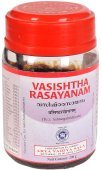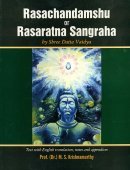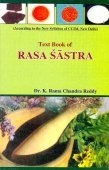Bola, Bōla: 9 definitions
Introduction:
Bola means something in Jainism, Prakrit, the history of ancient India, Marathi, Hindi, biology. If you want to know the exact meaning, history, etymology or English translation of this term then check out the descriptions on this page. Add your comment or reference to a book if you want to contribute to this summary article.
Alternative spellings of this word include Bol.
In Jainism
General definition (in Jainism)
Source: academia.edu: Rare Sanskrit Words from the Commentary on the Bṛhat-kalpa-bhāṣyaBola (बोल) refers to an “uproar”.—In his publication for the Journal of Jaina Studies, Yutaka Kawasaki collected in a non-definite list several rare Sanskrit words (e.g., bola) from Malayagiri’s and Kṣemakīrti’s commentaries on the Bṛhatkalpabhāṣya: a 6th century commentary on monastic discipline authored by Svetambara Jain exegete Saṅghadāsa.

Jainism is an Indian religion of Dharma whose doctrine revolves around harmlessness (ahimsa) towards every living being. The two major branches (Digambara and Svetambara) of Jainism stimulate self-control (or, shramana, ‘self-reliance’) and spiritual development through a path of peace for the soul to progess to the ultimate goal.
India history and geography
Source: Project Gutenberg: Castes and Tribes of Southern India, Volume 1Bola (“bangle”) is one of the exogamous septs (divisions) among the Kurubas (a tribe of South India). The Kurubas are sub-divided into clans or gumpus, each having a headman or guru called a gaudu, who gives his name to the clan. And the clans are again sub-divided into gotras or septs (viz., Bola).

The history of India traces the identification of countries, villages, towns and other regions of India, as well as mythology, zoology, royal dynasties, rulers, tribes, local festivities and traditions and regional languages. Ancient India enjoyed religious freedom and encourages the path of Dharma, a concept common to Buddhism, Hinduism, and Jainism.
Biology (plants and animals)
Source: Wisdom Library: Local Names of Plants and DrugsBola in the Bengali language is the name of a plant identified with Kleinhovia hospita L. from the Sterculiaceae (Cacao) family. For the possible medicinal usage of bola, you can check this page for potential sources and references, although be aware that any some or none of the side-effects may not be mentioned here, wether they be harmful or beneficial to health.
Bola in the Assamese language is the name of a plant identified with Morus macroura Miq. from the Moraceae (Mulberry) family having the following synonyms: Morus alba var. laevigata, Morus laevigata.
Bola [বোলা] in the Bengali language is the name of a plant identified with Talipariti tiliaceus Hibiscus tiliaceus L. from the Malvaceae (Mallow) family having the following synonyms: Hibiscus tiliaceus f. albiflorus, Hibiscus hastatus.
Bola [बोला] in the Hindi language, ibid. previous identification.
Source: Google Books: CRC World Dictionary (Regional names)1) Bola in Cameroon is the name of a plant defined with Cordia millenii in various botanical sources. This page contains potential references in Ayurveda, modern medicine, and other folk traditions or local practices It has the synonym Gerascanthus millenii (Baker) Borhidi.
2) Bola in Central America is also identified with Jatropha curcas It has the synonym Ricinus jarak Thunb. (etc.).
3) Bola in India is also identified with Commiphora abyssinica It has the synonym Balsamodendrum abyssinicum Engl. (etc.).
4) Bola is also identified with Commiphora myrrha It has the synonym Commiphora myrrha Engl. (etc.).
5) Bola is also identified with Morus macroura It has the synonym Morus laevigata Wall. ex Brandis (etc.).
6) Bola is also identified with Talipariti tiliaceum It has the synonym Hibiscus hastatus L.f. (etc.).
7) Bola in Sierra Leone is also identified with Imperata cylindrica It has the synonym Calamagrostis lagurus (L.) Koeler (etc.).
8) Bola is also identified with Marantochloa cuspidata It has the synonym Arundastrum cuspidatum (Roscoe) Kuntze (etc.).
9) Bola is also identified with Marantochloa leucantha It has the synonym Clinogyne rubescens Gagnep. (etc.).
Example references for further research on medicinal uses or toxicity (see latin names for full list):
· Prodromus Systematis Naturalis Regni Vegetabilis (1873)
· Icones et Descriptiones Plantarum, quae aut sponte … (1794)
· Monographiae Phanerogamarum (1883)
· Synopsis Plantarum Glumacearum (1855)
· Journal of Japanese Grassland Science (1991)
· Flora Sylvatica Koreana (1936)
If you are looking for specific details regarding Bola, for example pregnancy safety, side effects, extract dosage, chemical composition, health benefits, diet and recipes, have a look at these references.

This sections includes definitions from the five kingdoms of living things: Animals, Plants, Fungi, Protists and Monera. It will include both the official binomial nomenclature (scientific names usually in Latin) as well as regional spellings and variants.
Languages of India and abroad
Marathi-English dictionary
Source: DDSA: The Molesworth Marathi and English Dictionarybōla (बोल).—m (brū S) Speech, saying, words, mind or thoughts expressed. Ex. mājhā bōla kadhīṃ khōṭā paḍaṇāra nāhīṃ. 2 Reprehension, reproof, rebuke. v lāva. Ex. myāṃ aparādha kēlā nasatāṃ malā kāṃ bōla lāvitāṃ? bōla ṭhēvaṇēṃ To lay blame (upon). Ex. mhaṇē myāṃ kaisā anyāya kēlā || bōla ṭhēvūṃ kavaṇāvarī ||. bōla bōlaṇēṃ To say one's say. bōlānta bōla nasaṇēṃ g. of s. To have no congruity or consistency in one's speech.
--- OR ---
bōḷa (बोळ).—m (bōla S) Aloes or gum-myrrh. The distinctive terms are kāḷā bōḷa (called also bāḷanta- bōḷa) Socotrine aloes, and raktayābōḷa or tāmbaḍā bōḷa Myrrh. By bōḷa alone is especially understood Aloes. 2 Thickened and clotted curds, paint, or ink. 3 Refuse (of grain, fruits, things in general). bōḷa ghālaṇēṃ or ghālīta basaṇēṃ To weary one's self with speaking, i. e. to make one's chest sore with speaking, and thus render it necessary to apply bōḷa. bōḷa ghālaṇēṃ-pāḍaṇēṃ-pājaṇēṃ-dēṇēṃ kāmāmadhyēṃ To spoil or corrupt (a matter); to embitter.
--- OR ---
bōḷa (बोळ).—m An alley, a lane, a narrow passage between houses or hedges.
--- OR ---
bōḷā (बोळा).—m A clout or rag loosely twisted or doubled together (to dip into ink, paint, whitewash, cowdung-wash, in order to besmear anything; to stuff into and stop up a hole; to dip into milk and put into the mouth of a newly born child &c.) 2 A blot; a drop of ink, paint, or other coloring substance, as fallen upon anything. 3 Applied, contemptuously, to an old, dirty, or loosely huddled together garment. bōḷā phiraviṇēṃ (To pass the smearing clout over.) To sweep clean; to clear away utterly; to spoil, strip, denude: also to expunge or blot out, lit. fig.
Source: DDSA: The Aryabhusan school dictionary, Marathi-Englishbōla (बोल).—m Speech, saying; reproof. bōla ṭhēvaṇēṃ Lay blame (upon). bōlaṇyānta bōlaṇēṃ nasaṇēṃ Have no congruity in one's speech. bōla bōlaṇēṃ Say one's say.
--- OR ---
bōḷa (बोळ).—m Aloes. An alley. bōḷa ghālīta basaṇēṃ Weary oneself with speaking. kāmāmadhyēṃ bōḷa ghālaṇēṃ or pāḍaṇēṃ Spoil a matter.
--- OR ---
bōḷā (बोळा).—m A clout; a blot. bōḷā phiraviṇēṃ Sweepclean.
Marathi is an Indo-European language having over 70 million native speakers people in (predominantly) Maharashtra India. Marathi, like many other Indo-Aryan languages, evolved from early forms of Prakrit, which itself is a subset of Sanskrit, one of the most ancient languages of the world.
Hindi dictionary
Source: DDSA: A practical Hindi-English dictionaryBola (बोल) [Also spelled bol]:—(nm) speech; utterance; opening words of a song; taunt; ~[cāla] conversation, talk; speaking terms; •[kā] colloquial; ~[cāla na rahanā/honā] not to be on speaking terms, not to talk to each other; -[na nikalanā/phūṭanā] to be rendered mute, to become speechless; ~[paṭa] the talkie; -[phūṭanā] words to flow out, an utterance to be made; -[māranā] to taunt; to slight.
...
Prakrit-English dictionary
Source: DDSA: Paia-sadda-mahannavo; a comprehensive Prakrit Hindi dictionary1) Bola (बोल) in the Prakrit language is related to the Sanskrit word: Boḍa.
2) Bola (बोल) also relates to the Sanskrit word: Vyatikram.
Prakrit is an ancient language closely associated with both Pali and Sanskrit. Jain literature is often composed in this language or sub-dialects, such as the Agamas and their commentaries which are written in Ardhamagadhi and Maharashtri Prakrit. The earliest extant texts can be dated to as early as the 4th century BCE although core portions might be older.
Kannada-English dictionary
Source: Alar: Kannada-English corpusBōḷa (ಬೋಳ):—
1) [noun] end of life; death.
2) [noun] something that may cause death or injury; a peril.
--- OR ---
Bōḷa (ಬೋಳ):—
1) [noun] a man destitute of teeth.
2) [noun] a man who has shaven his head completely.
3) [noun] a man having no hair on the scalp; a bald man.
4) [noun] a destitute man.
5) [noun] (dial.) a slow-witted man; a dull fellow.
6) [noun] an ox not having horns.
--- OR ---
Bōḷa (ಬೋಳ):—[noun] the plant Commiphora myrrha ( = Balsamodendron myrrha) of Burseraceae family.
--- OR ---
Bōḻa (ಬೋೞ):—[noun] = ಬೋಳ [bola]1.
--- OR ---
Bōḻa (ಬೋೞ):—[noun] = ಬೋಳ [bola]2.
--- OR ---
Bōḻa (ಬೋೞ):—[noun] = ಬೋಳ [bola]3.
Kannada is a Dravidian language (as opposed to the Indo-European language family) mainly spoken in the southwestern region of India.
See also (Relevant definitions)
Starts with (+54): Bola de tejon, Bola pane, Bola-kabola, Bola-kabola-garnu, Bolaahat, Bolabagari, Bolabala, Bolabhanda, Bolacala, Bolacalama, Bolacali, Boladaraga, Boladavaghali, Bolaga, Bolagada, Bolagadale, Bolagama, Bolaghevada, Bolagtab, Bolah.
Ends with (+40): Abola, Adumbola, Anabola, Attumbola, Averrhoa carambola, Balantabola, Bambole, Banamtibola, Belimbing kembola, Birambola, Bola-kabola, Bolambola, Calabola, Capim cebola, Carambola, Caubola, Dharabola, Dwarf mobola, Eeshvarbola, Eliyabola.
Full-text (+89): Pranaka, Kubja, Dhopata, Bol, Tambada Bola, Bolas, Eratha bolam, Po de bola, Bola pane, Raktya Bola, Pau de bola, Bola de tejon, Vyatikram, Calabola, Ladalada, Nimbura, Boda, Baratera, Labalaba, Areture.
Relevant text
Search found 10 books and stories containing Bola, Bolā, Bōḷā, Bōḷa, Bōla, Bōḻa; (plurals include: Bolas, Bolās, Bōḷās, Bōḷas, Bōlas, Bōḻas). You can also click to the full overview containing English textual excerpts. Below are direct links for the most relevant articles:
Chaitanya Bhagavata (by Bhumipati Dāsa)
Verse 3.1.240 < [Chapter 1 - Meeting Again at the House of Śrī Advaita Ācārya]
Verse 3.4.97 < [Chapter 4 - Descriptions of Śrī Acyutānanda’s Pastimes and the Worship of Śrī Mādhavendra]
Verse 3.4.16 < [Chapter 4 - Descriptions of Śrī Acyutānanda’s Pastimes and the Worship of Śrī Mādhavendra]
Rasa Jala Nidhi, vol 4: Iatrochemistry (by Bhudeb Mookerjee)
Part 9 - Treatment of Piles (8): Hiranya-sundara rasa < [Chapter V - Piles]
Part 11 - Treatment of Piles (10): Tiksna-mukha rasa < [Chapter V - Piles]
Treatment for fever (69): Sannipata-gajankusha rasa < [Chapter II - Fever (jvara)]
Village Folk-tales of Ceylon (Sri Lanka), vol. 1-3 (by Henry Parker)
Story 37 - The Lion And The Turtle < [Part I - Stories told by the Cultivating Caste and Vaeddas]
Story 68 - The Lion And The Jackal < [Part II (c) - Stories of the Durayas]
Story 36 - The Jackal And The Turtle < [Part I - Stories told by the Cultivating Caste and Vaeddas]
Tattvartha Sutra (with commentary) (by Vijay K. Jain)
Verse 7.32 - The transgressions of Anarthadaṇḍavirati-vrata < [Chapter 7 - The Five Vows]
Folk Tradition of Bengal (and Rabindranath Tagore) (by Joydeep Mukherjee)
Amarakoshodghatana of Kshirasvamin (study) (by A. Yamuna Devi)
Economics (3): Goods of trade < [Chapter 3 - Social Aspects]
Related products





